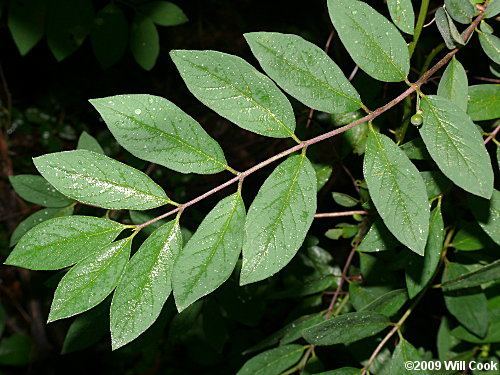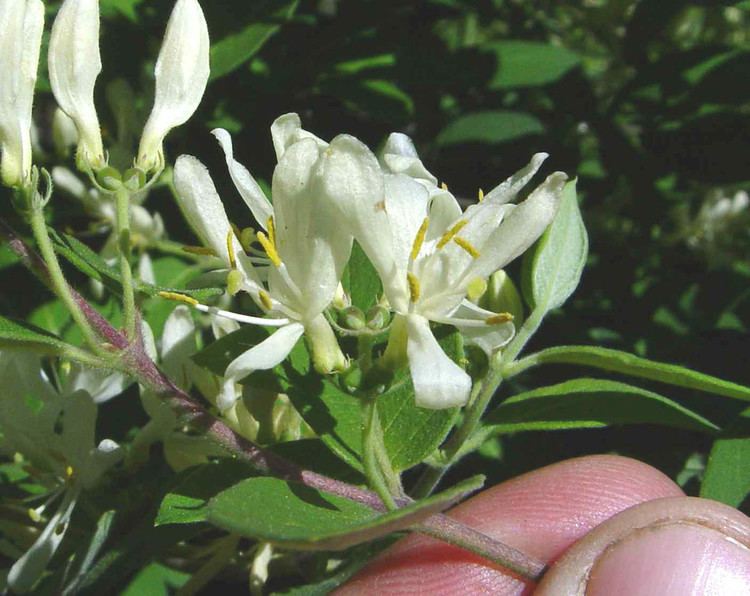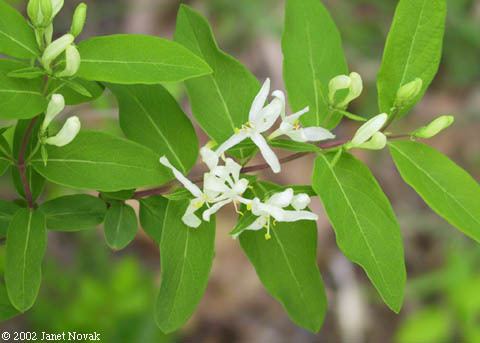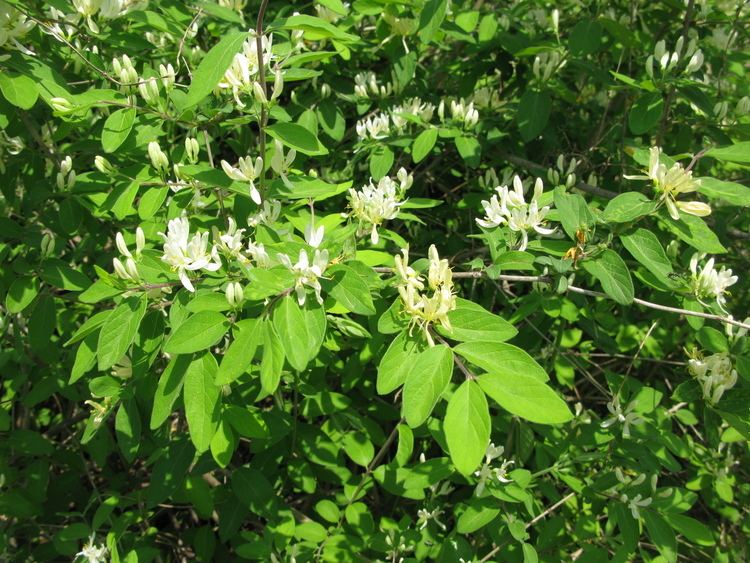Scientific name Lonicera morrowii Rank Species | Genus Lonicera Higher classification Honeysuckle | |
 | ||
Similar Honeysuckle, Lonicera maackii, Lonicera tatarica, Caprifoliaceae, Lonicera tschonoskii | ||
Lonicera morrowii, the Morrow's honeysuckle, is a deciduous honeysuckle in the family Caprifoliaceae, native to Japan, Korea, and Northeast China. It is a shrub, reaching a height of 2-2.5 m, with oblong leaves 4–6 cm long. It leafs out quite early in the spring, and in North America is commonly the first deciduous shrub with foliage in March. The flowers are white to pale yellow, and the fruit is a dark red berry 7–8 mm diameter containing numerous seeds. The berries, while eaten frequently by birds, are considered poisonous to humans. It is colloquially called "bush honeysuckle" in the United States, and is considered an invasive species.
Contents

As an invasive species

Morrow's honeysuckle is confirmed as a highly invasive species over the northeastern third of the United States. Morrow's honeysuckle thrives at the edges of forests, roads, or other natural or man-made barriers, but is not limited to them, and is found in both mature and disturbed forests. In some areas, Morrow's honeysuckle is the dominant plant species, especially in areas of disturbed ecological succession. It is suspected that Lonicera morrowii is allelopathic, and may capitalize on disturbed ecological succession by establishing itself and then preventing the growth of plants underneath it. With a sufficiently established thicket of honeysuckle, even other shade-tolerant, invasive species, such as fortune's spindle have difficulty growing underneath it, whether due to its suspected allelopathic activity or through soil depletion.
Effects on flora and fauna

Due to its early leafing, Morrow's honeysuckle is particularly harmful to spring ephemerals, flowers that evolved to bloom briefly in the spring before other plants leafed out.

Many cedar waxwings' wax spots in the eastern United States have taken on an unusual orange hue in the last 35 years, a phenomenon that has been attributed to Lonicera morrowii. The chemical involved in this color change is rhodoxanthin, a red dye found in the berries of Morrow's honeysuckle.

